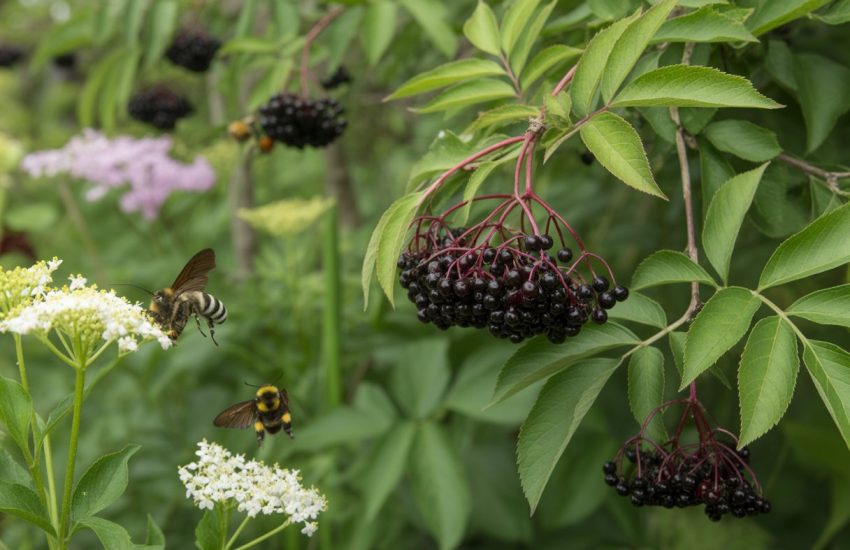What Plant Zone is Illinois? A Guide to Understanding Illinois’ Plant Hardiness Zones
Illinois is a state located in the Midwest region of the United States. The state is known for its diverse landscape, which includes prairies, forests, and wetlands. With its varied climate and geography, it’s important for those interested in gardening or agriculture to know what plant hardiness zone Illinois falls into.
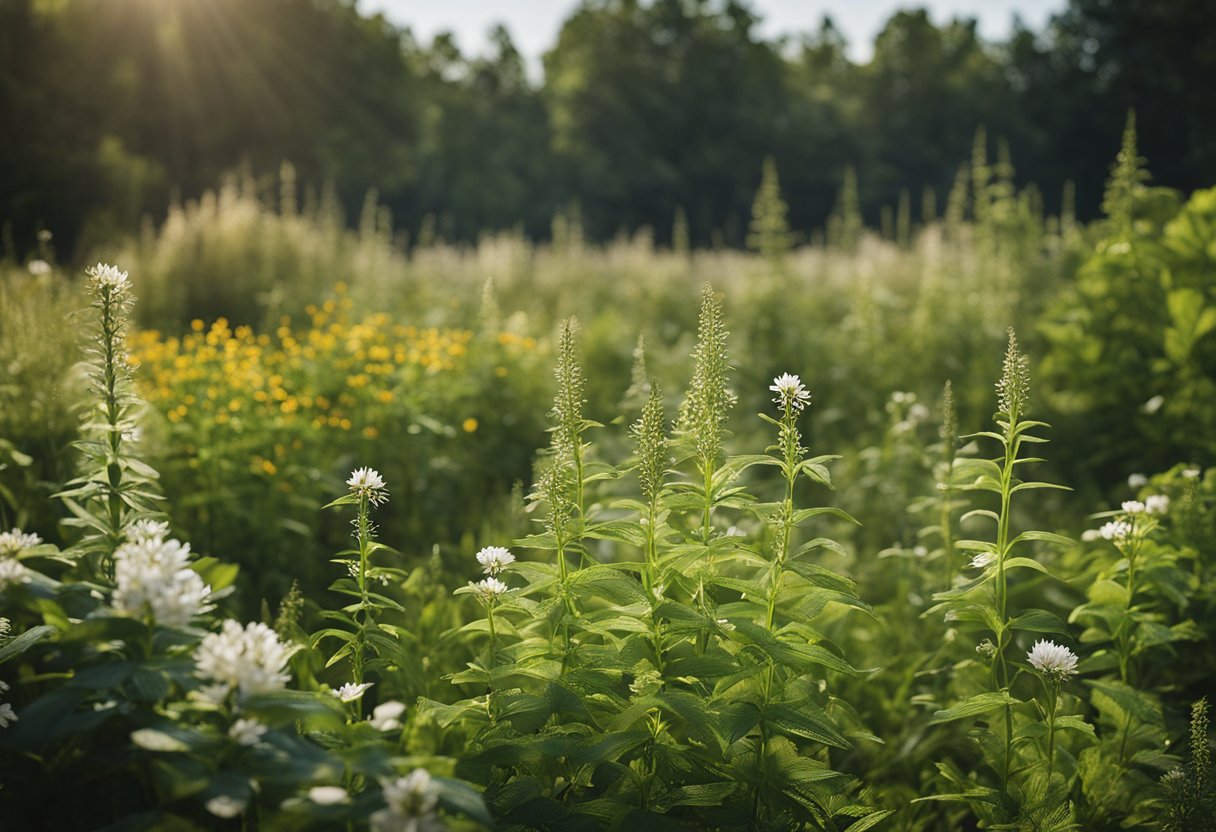
The United States Department of Agriculture (USDA) has created a map that divides the country into 13 plant hardiness zones based on average annual minimum temperatures. These zones are used to help gardeners and farmers determine which plants are most likely to thrive in a particular area. Illinois is located in zones 5a to 7b, which means that the state experiences minimum temperatures ranging from -20 to 10 degrees Fahrenheit. Understanding which plant hardiness zone Illinois falls into is important for selecting plants that are well-suited to the state’s climate.
Understanding Plant Hardiness Zones
USDA Hardiness Zone Map
The USDA Hardiness Zone Map is a tool used to help gardeners and growers determine which plants are most likely to thrive in their specific climate. The map is divided into 13 zones, each with a range of average annual minimum temperatures. The zones are based on the coldest temperatures that occur in a given area, and they help gardeners choose plants that are adapted to their local climate.
Zone Classification and Illinois
Illinois is located in USDA Hardiness Zones 5a to 7a. Zone 5a has an average minimum temperature range of -20 to -15 degrees Fahrenheit, while Zone 7a has an average minimum temperature range of 0 to 5 degrees Fahrenheit. This means that gardeners in Illinois should choose plants that are adapted to cold temperatures, but also able to tolerate heat and humidity.
Some plants that are well-suited to Illinois’ climate include black-eyed Susans, coneflowers, and daylilies. These plants are hardy and able to withstand the temperature fluctuations that occur in the state. Gardeners should also consider factors such as soil type, sun exposure, and moisture levels when choosing plants for their garden.
In conclusion, understanding plant hardiness zones is essential for selecting plants that will thrive in a particular climate. By using the USDA Hardiness Zone Map, gardeners in Illinois can choose plants that are well-suited to the state’s climate and conditions.
Illinois Climate Overview
Illinois is situated in the Midwestern region of the United States and has a humid continental climate. The state experiences four distinct seasons with warm summers and cold winters.
Temperature Variations
The average annual extreme minimum temperature in Illinois is around -20°F (-29°C), which occurs during the winter months. The average temperatures vary across the state, with northern Illinois being colder than southern Illinois. The daytime high temperatures in the summer months can reach up to 85°F (29°C), while the nighttime low temperatures can drop to around 60°F (16°C).
Climatological Winter
Illinois experiences a climatological winter, which is defined as the three-month period from December to February. During this time, the state experiences the coldest temperatures of the year, with an average temperature of around 25°F (-4°C). The winter season also brings snowfall to the state, with an average of 26 inches (66 cm) in northern Illinois and 14 inches (36 cm) in central and southern Illinois.
Overall, Illinois has a varied climate with significant temperature variations between seasons and regions. The temperature data is collected over a period of 30 years, which provides a reliable representation of the state’s weather data.
Regional Variations in Illinois
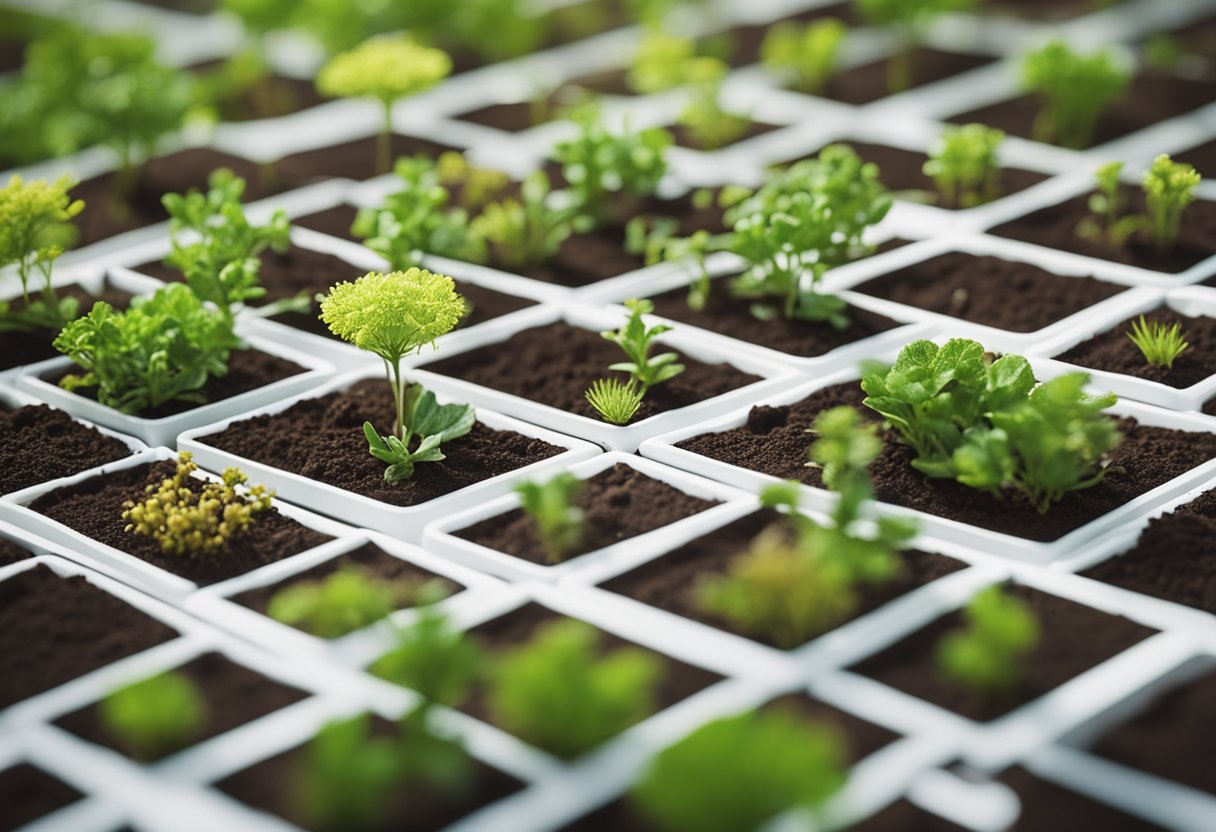
Illinois is a state with diverse climatic conditions, and the plant hardiness zone varies across the regions. The USDA Plant Hardiness Zone Map is a useful tool to determine the climatic conditions of an area, and it divides the United States into 13 zones based on the average annual minimum temperature.
Northern Illinois
Northern Illinois lies in USDA plant hardiness zones 4b to 5a, which means the region experiences an average minimum temperature of -20°F to -10°F. The region has cold winters, and the growing season is shorter than other areas of the state. However, the region has fertile soil, and farmers can grow crops such as corn, soybeans, and wheat.
Central Illinois
Central Illinois lies in USDA plant hardiness zones 5a to 6a, which means the region experiences an average minimum temperature of -20°F to -5°F. The region has a moderate climate, with hot summers and cold winters. The fertile soil and favorable weather conditions make the region suitable for growing a variety of crops, including corn, soybeans, and vegetables.
Southern Illinois
Southern Illinois lies in USDA plant hardiness zones 6a to 7a, which means the region experiences an average minimum temperature of -10°F to 5°F. The region has a milder climate than other areas of the state, with hot summers and mild winters. The region has fertile soil, and farmers can grow crops such as corn, soybeans, and fruits such as peaches and apples.
In the Chicagoland area, the plant hardiness zone varies from zone 5b to 6a, depending on the location. The urban sprawl has affected the climate of the region, and the temperature is warmer than the surrounding areas.
In conclusion, Illinois is a state with diverse climatic conditions, and the plant hardiness zone varies across the regions. The region has fertile soil and favorable weather conditions, making it suitable for growing a variety of crops.
Gardening in Illinois
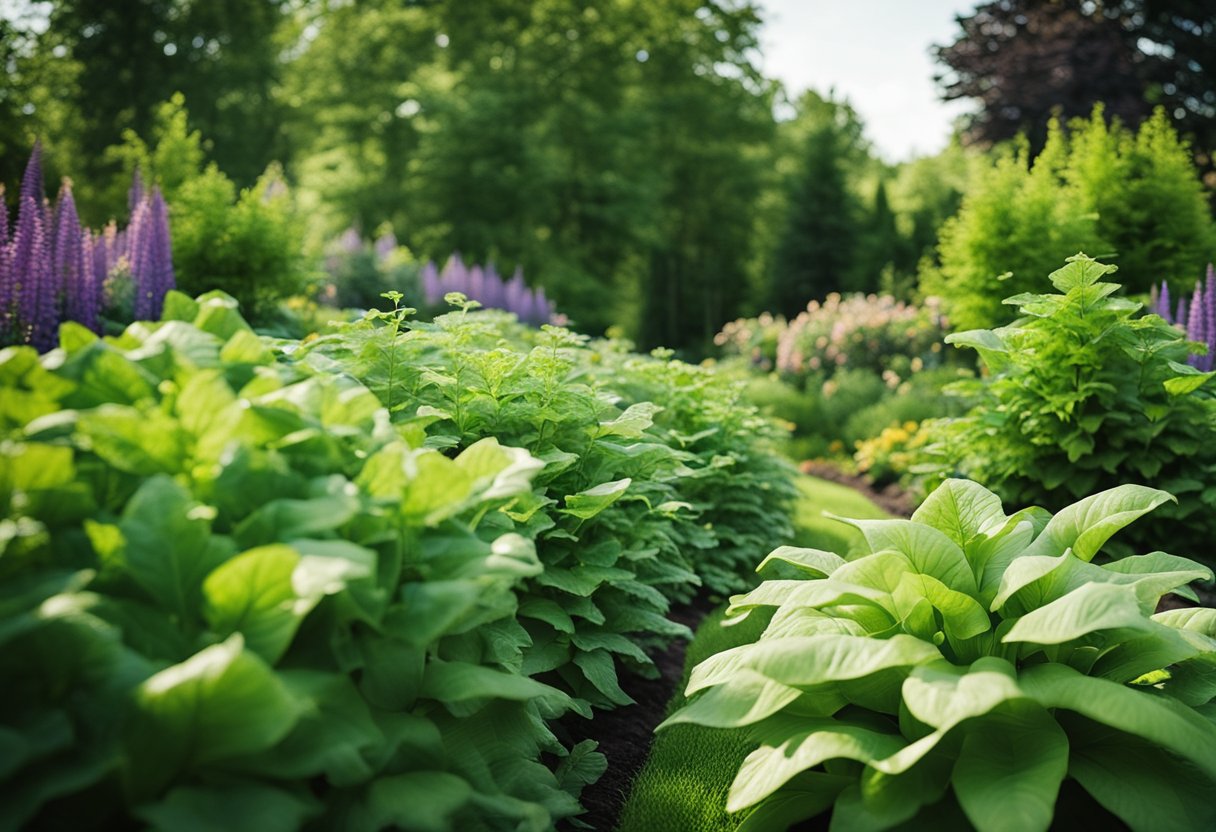
Illinois is located in USDA Plant Hardiness Zones 5a to 7a, which means that gardeners in the state can grow a variety of plants, including perennials, annuals, and vegetables. However, the state’s climate can be challenging, with cold winters and hot summers, so it’s important to choose the right plants and planting strategies.
Choosing the Right Plants
When selecting plants for an Illinois garden, it’s important to consider their hardiness zone and the state’s climate. Gardeners should choose plants that are adapted to the local conditions and can tolerate the temperature fluctuations and weather patterns of the region.
Some popular perennial species for Illinois gardens include black-eyed Susan, coneflower, and hosta. These plants are hardy and can survive the state’s cold winters. For annuals, gardeners can consider planting petunias, marigolds, and zinnias, which can add color and variety to the garden.
Vegetable gardening is also popular in Illinois, with crops such as corn, chard, and tomatoes being grown in many gardens. Gardeners should choose vegetable varieties that are adapted to the state’s climate and can tolerate the temperature fluctuations and weather patterns of the region.
Planting Strategies
To ensure a successful garden in Illinois, gardeners should follow some planting strategies. One important strategy is to plant at the right time. Gardeners should plant their seeds or seedlings according to the recommended planting times for their specific plants.
Another strategy is to prepare the soil properly. Illinois soil can be heavy and clay-like, so gardeners should amend it with organic matter such as compost or peat moss to improve drainage and soil structure. Adding fertilizer can also help provide the necessary nutrients for plant growth.
In addition, gardeners should consider using mulch to help retain moisture in the soil and prevent weed growth. Mulch can also help regulate soil temperature and protect plant roots from extreme heat or cold.
Overall, gardening in Illinois can be rewarding, but it requires careful planning and consideration of the state’s climate and soil conditions. By choosing the right plants and following proper planting strategies, gardeners can create a beautiful and productive garden in the state.
Impact of Climate Change on Plant Zones
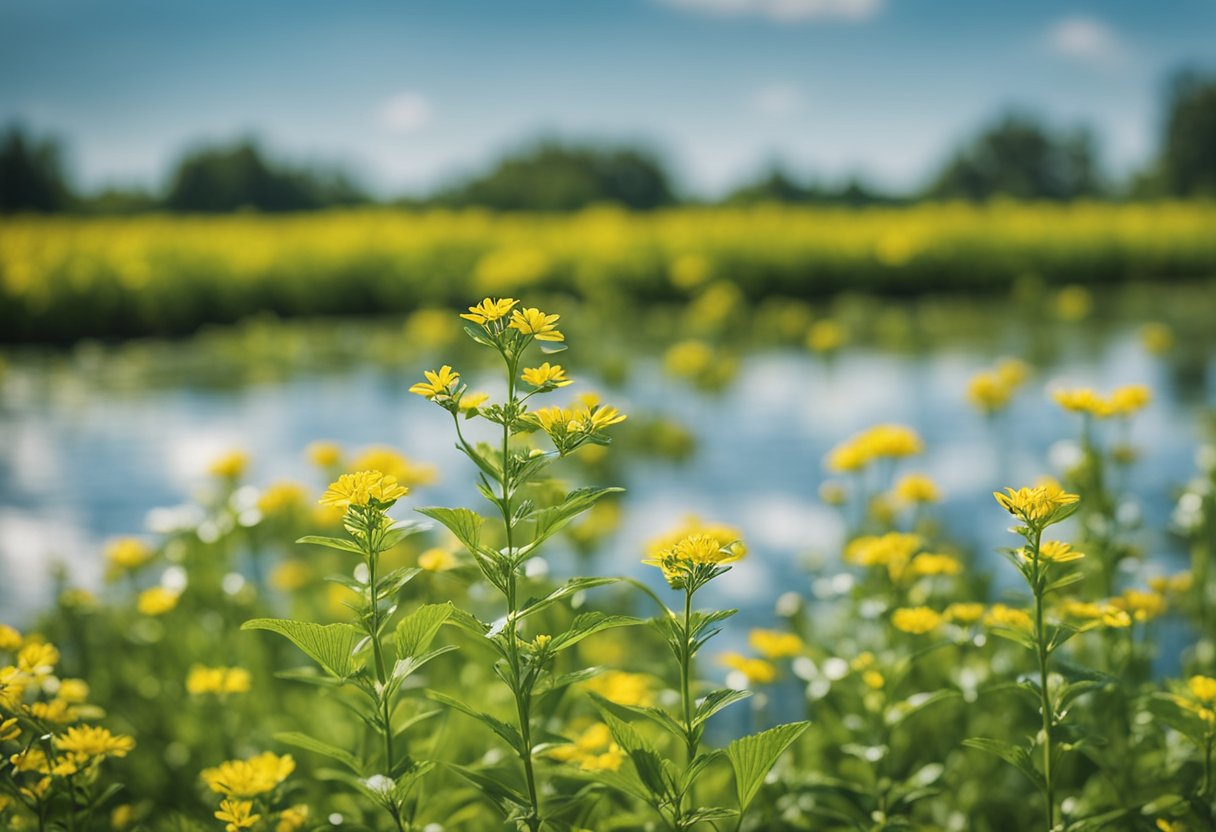
Warming Winters
Illinois is known for its cold winters, but with human-caused global warming, winters are becoming milder. This warming trend affects plant zones in Illinois. The extreme minimum temperature is used to determine the plant zones, and as it increases, the plant zones shift northward. This shift can be detrimental to plants that are not adapted to warmer temperatures.
Shifts in Hardiness Zones
Climate change is causing shifts in hardiness zones across the United States, including in Illinois. Hardiness zones are based on the average annual minimum temperature, and as temperatures warm, the zones shift northward. This means that plants that were once well-suited to a particular area may no longer be able to survive there.
The impact of these shifts can be seen in agriculture, forestry, and landscaping. Farmers may need to adjust their crops to adapt to the changing climate, while foresters may need to consider new species for reforestation efforts. Landscapers may need to choose plants that are better suited to the new hardiness zones.
In conclusion, the impact of climate change on plant zones in Illinois is significant. Warming winters and shifts in hardiness zones are just two examples of the ways that climate change is affecting the state’s flora. It is important to continue monitoring these changes and adapting our practices to ensure the sustainability of Illinois’ plant life.
Environmental Considerations
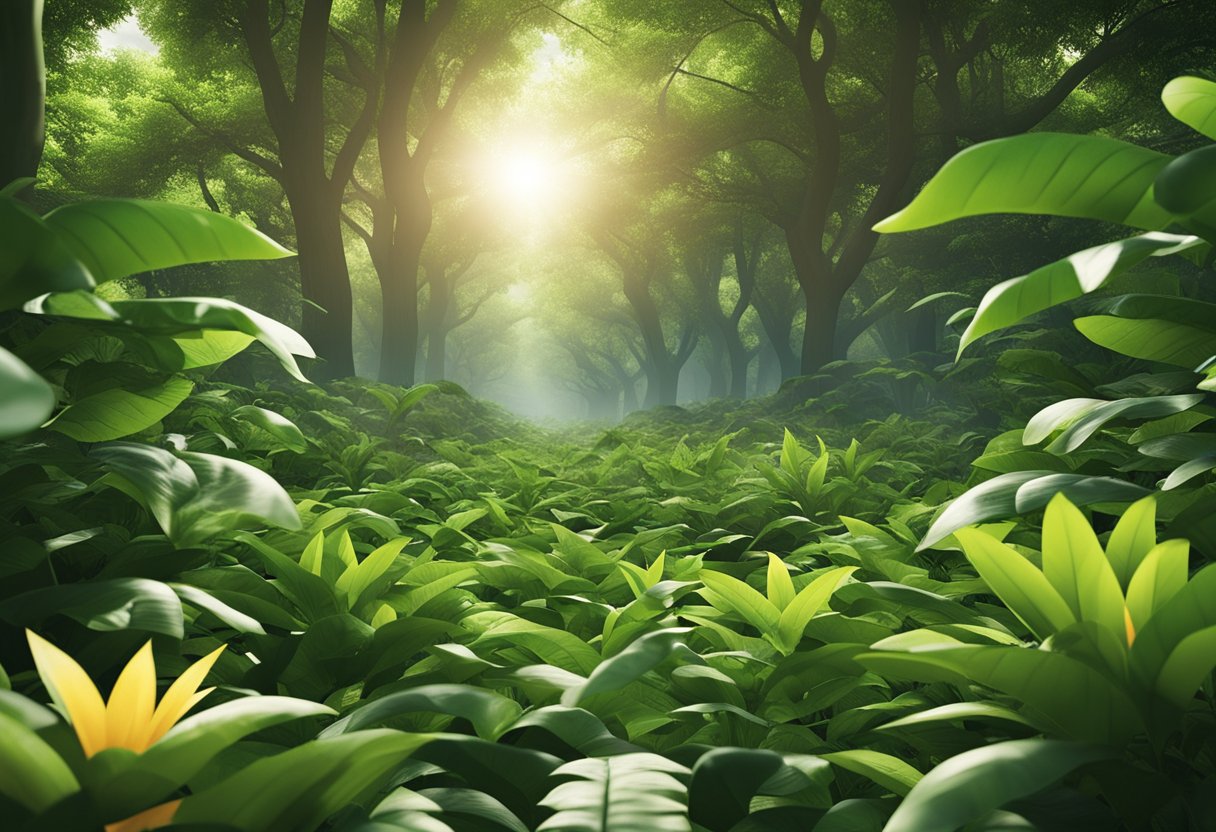
Native vs. Non-native Species
Illinois has a diverse range of natural ecosystems, including prairies, wetlands, and forests. These ecosystems have evolved over thousands of years and are home to a wide variety of plant and animal species. However, many of these ecosystems have been disrupted by the introduction of non-native species.
Non-native species are plants that have been introduced to an area where they are not native. These species can have a negative impact on the environment by outcompeting native species for resources and altering the ecosystem. In Illinois, non-native species such as Japanese honeysuckle and garlic mustard have become invasive and are causing significant damage to natural areas.
To protect the natural ecosystems of Illinois, it is important to plant native species. Native plants are adapted to the local environment and provide important habitat for native wildlife. Additionally, they require less water and fertilizer than non-native species, making them more sustainable.
Invasive Plants and Pests
Invasive plants and pests are a major threat to the natural ecosystems of Illinois. Invasive plants such as buckthorn and purple loosestrife can outcompete native species and alter the ecosystem. Invasive pests such as the emerald ash borer and gypsy moth can kill large numbers of trees, altering the forest ecosystem.
To prevent the spread of invasive species and pests, it is important to follow best management practices. This includes properly disposing of plant material, cleaning equipment after use, and not transporting firewood. Additionally, it is important to report any sightings of invasive species or pests to the appropriate authorities.
By planting native species and preventing the spread of invasive species and pests, we can help protect the natural ecosystems of Illinois for future generations.
Practical Information for Gardeners
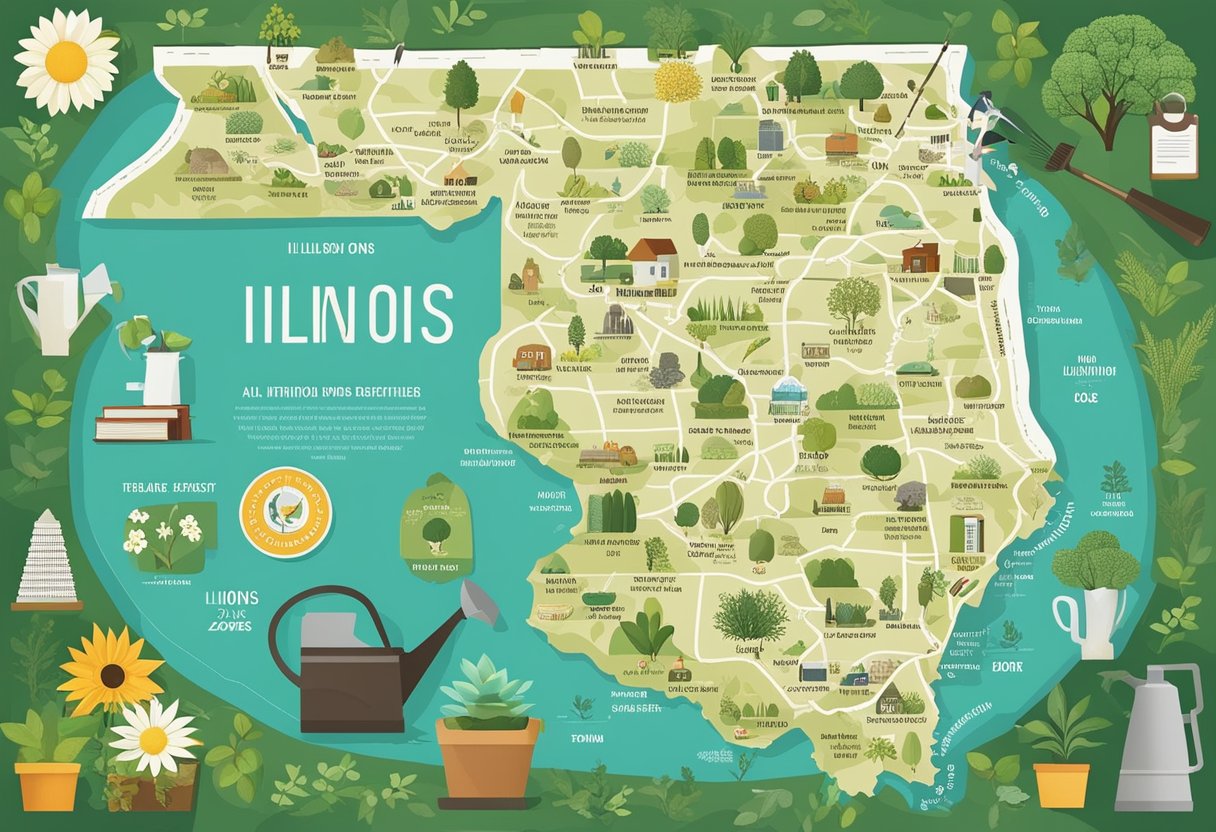
Using the USDA Map
Illinois falls under USDA Hardiness Zones 5a to 7a. The USDA Hardiness Zone Map is a valuable resource for gardeners as it provides information on the average minimum temperature in an area. This information is crucial for selecting plants that can survive in the region’s climate. Gardeners should select plants that can survive in their zone and also consider other factors such as soil type, sun exposure, and water requirements.
Local Resources and Support
The Department of Agriculture in Illinois provides resources and support to gardeners. They offer information on plant hardiness zone maps, soil types, and other gardening tips. GIS (Geographic Information System) technology is used to provide gardeners with detailed information about their specific location. Gardeners can also use their zip code to find out about the local climate and soil conditions.
Illinois has a diverse range of soil types that affect plant growth. Gardeners should test their soil’s pH level to determine whether it is acidic or alkaline. The pH level affects plant growth, and gardeners can adjust it by adding lime to increase alkalinity or sulfur to increase acidity.
The structure of the soil is also important for plant growth. Gardeners should improve soil structure by adding organic matter such as compost or manure. This improves soil drainage and aeration, which is essential for healthy plant growth.
Gardeners should also consider the amount of shade their garden receives. Shade-loving plants should be planted in areas with less sun exposure, while sun-loving plants should be planted in areas with more sun exposure.
In conclusion, gardeners in Illinois should use the USDA Hardiness Zone Map to select plants that can survive in their zone. They should also consider other factors such as soil type, pH level, soil structure, and sun exposure. The Department of Agriculture in Illinois provides valuable resources and support to gardeners, and gardeners can use GIS technology and their zip code to find out about their local climate and soil conditions.
Frequently Asked Questions
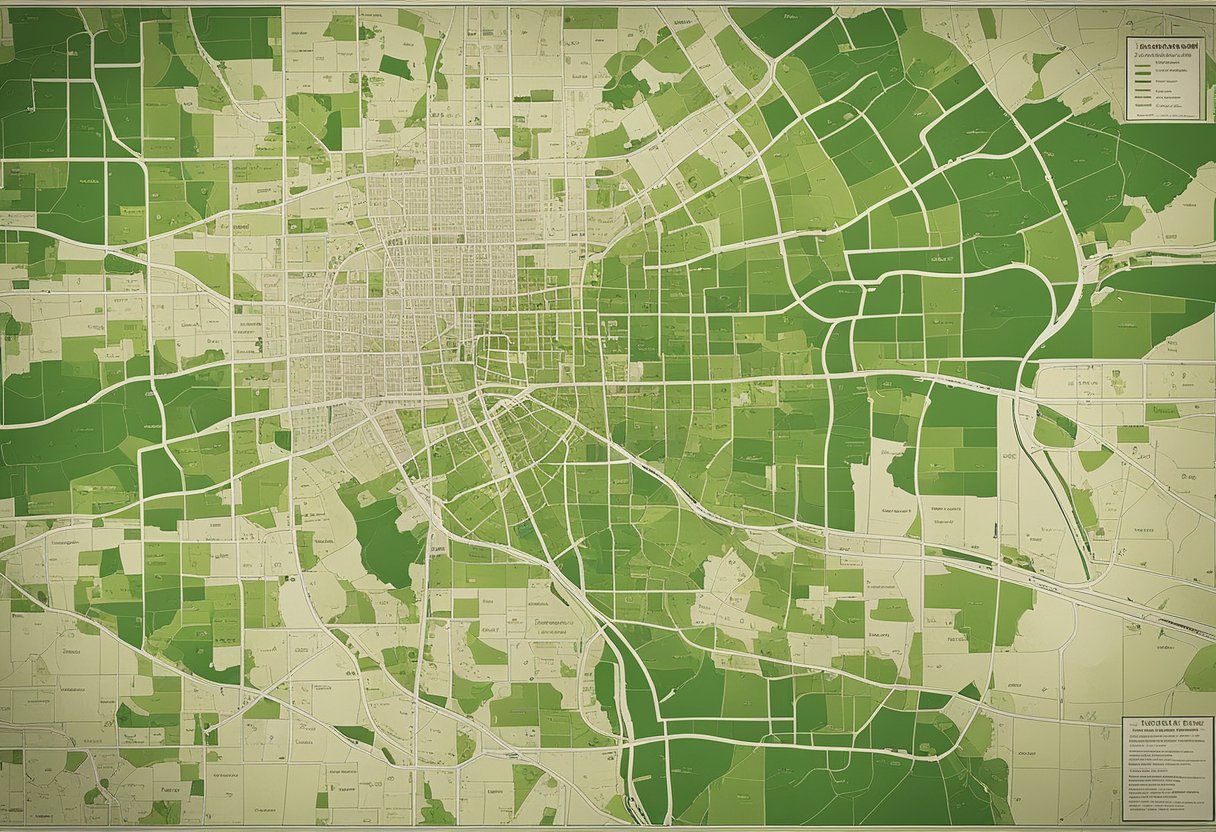
Which USDA hardiness zone covers Chicago?
Chicago is located in USDA hardiness zone 6a. This means that the average minimum temperature in the area ranges between -10°F to -5°F.
What is the planting zone designation for northern Illinois?
Northern Illinois falls under USDA hardiness zones 5a and 5b. The average minimum temperature in these zones ranges between -20°F to -10°F and -15°F to -10°F, respectively.
Can you specify the growing zone for central Illinois?
Central Illinois is located in USDA hardiness zone 6a. The average minimum temperature in this zone ranges between -10°F to -5°F.
What types of plants are suitable for growing in zone 5b?
Zone 5b is suitable for growing a wide variety of plants such as tulips, daffodils, hyacinths, and other spring bulbs, as well as vegetables like broccoli, cauliflower, and kale. Trees like the red maple, sugar maple, and white oak also thrive in this zone.
When should planting commence in Illinois zone 5b?
Planting in zone 5b should commence in late April or early May, after the last frost date. This allows for optimal growing conditions and helps to prevent damage to tender plants.
What is the climate zone classification for Naperville, Illinois?
Naperville, Illinois is classified as a humid continental climate zone. This means that the area experiences four distinct seasons with hot summers and cold winters, and precipitation is evenly distributed throughout the year.


